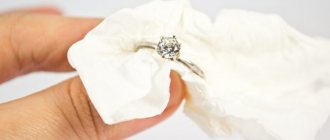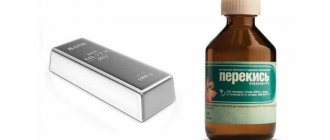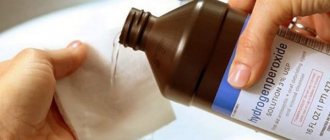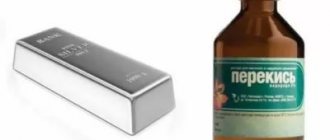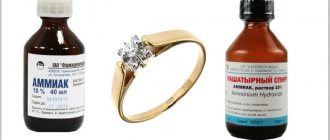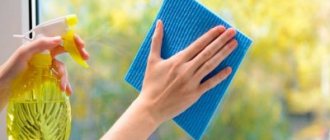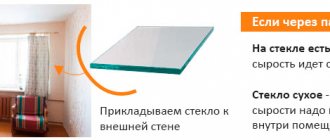Icer Tried all cleaning methods
I have some silver jewelry that I stopped wearing a couple of years ago because it tarnished. A week ago I came across a chain and decided to see if it was possible to return it to its original appearance.
After cleaning silver using any of the described methods, rinse it thoroughly with clean water.
I read the advice of jewelers and manufacturers and came to the conclusion that the best way to clean silver is with ammonia and peroxide. I'll tell you how to do the work.
A little history about the appearance of depilation
Women have always struggled with excess body hair.
Already in ancient Egypt they knew how to do depilation, although the methods were unsafe: they used quicklime and even arsenic. Later, around 550 BC, Roman women learned to remove hair with pumice stones and invented a kind of razor. Only in the 20s of the last century did European women think about shaving their armpits, and all thanks to new fashion trends, they became the standard of sophistication for sleeveless dresses. And they started talking about shaving their legs only after World War II, when short dresses and tapered skirts above the knee were popularized. Nowadays, body hair is a sign of sloppiness and unkemptness, so many women resort to all sorts of methods to combat hair growth. One of the safe and reliable methods is hair removal with hydrogen peroxide.
What is hydrogen peroxide?
Hydrogen peroxide (hydrogen peroxide, as well as hydroperite, known to many women of the Soviet and post-Soviet period) is a chemical compound very close to water. But in chemistry, everything is not so simple and the presence of just one additional oxygen gives peroxide properties different from water. Due to its ability to oxidize everything in its path, it is widely used both in everyday life and in industry. Hydrogen peroxide is not only produced in laboratory conditions; nature itself creates it almost every day. For example, there is a lot of it in mountain streams or rainwater and snow, and even in the simplest bottle of non-carbonated water, if you shake it first.
Peroxide is an affordable remedy for removing unpleasant hair on a woman’s body. It has been valued since ancient times due to its ability to effectively lighten and thin hair stems and slow down growth by affecting the follicles. As a result, the hair may disappear completely. Coarse and black hair does not respond well to peroxide, but nevertheless it can be dealt with. One of the recipes presented will definitely help you cope with increased hair growth on different parts of the body.
Hydrates
(from “water”) - products of addition to inorganic and organic substances.
History of the name
This term was previously widely used for all compounds that release water when heated. So, they called it sodium hydroxide. However, now only compounds in which a water molecule is present as a separate structural unit are called hydrates.
John Carroll gives the following definition of hydrates, which is used in the oil and gas industry:
“Hydrates” are substances that are usually in a gaseous state at room temperature. These substances include,, and. This is where the term “gas hydrates” comes from, as well as one of the widespread misconceptions associated with this type of compound. Many people mistakenly believe that non-aqueous liquids are incapable of hydrate formation, but in fact, other liquids can form hydrates. An example of a substance that is in a liquid state at room conditions, but still forms a hydrate, can be called (freon-12).
Hydrate formation
J. Carroll explains the reason for the formation of hydrates as follows:
The ability of water to form hydrates is explained by the presence in it. Hydrogen bonding causes water molecules to line up in geometrically correct structures. In the presence of molecules of certain substances, this ordered structure is stabilized and a mixture is formed, released in the form of a solid precipitate. Water molecules in such compounds are called “hosts,” and molecules of other substances that stabilize the crystal lattice are called “guests” (hydrate formers). Crystal lattices of hydrates have a complex, three-dimensional structure, where water molecules form a framework, in the cavities of which there are enclosed guest molecules. It is believed that the stabilization of the crystal lattice in the presence of guest molecules is due to intermolecular attraction not associated with electrostatic attraction. Another interesting feature of gas hydrates is the absence of bonds between guest and host molecules. Guest molecules can rotate freely within the lattices formed by host molecules. Thus, these compounds are best described as
- Natural gas hydrates, trans. from English - Technopress Publishing House, 2007. - 316 p., ill.
Top 3 ways to make compresses with peroxide
Method one
- A solution of 5-6 percent hydrogen peroxide - 45 ml.
- Ammonia - 0.5 teaspoon.
- Flour - 0.5 teaspoon.
Cooking method
Mix all the ingredients, you should get a paste-like mass. It is necessary to apply the resulting composition to problem areas - at least 30-40 minutes. It is recommended to repeat the procedure 2-3 times a week; within a month you will notice that your hair has become lighter and thinner, and after about six months you will completely get rid of unpleasant hair.
Method two
- Hydrogen peroxide - 1 tablespoon.
- Ammonia - 0.5 teaspoon.
- Liquid soap or shower gel - 0.5 tablespoon.
Cooking method
Mix all components of the composition until a homogeneous mass similar to liquid honey is obtained. Apply the resulting mixture to problem areas. After about 20-30 minutes, rinse off the mixture and soothe the skin with aftershave lotion or body cream. Repeat the procedure every week.
Method three
There is another interesting way to use hydrogen peroxide for hair removal - it is as simple and cheap as possible. But according to reviews it is a success.
- Hydrogen peroxide.
- Cotton pad.
Use a moistened disc to lubricate problem areas and go sunbathing. The combination of peroxide and sunlight will make your hair brittle and colorless. Great option for summer!
On hands
- 6% hydrogen peroxide solution - 30 ml (about 2 tablespoons).
- Warm purified water - 30 ml.
- Ammonia - 2 ml.
- Baking soda - 10 g.
Method of preparation: in a glass or clay container, mix hydrogen peroxide and water, add ammonia. To avoid unwanted allergic reactions, apply a small amount of the mixture to the inside of your elbow. Hold the mixture for 15 minutes, if there is no itching or redness, feel free to apply a thin layer to problem areas. Leave for about an hour. Rinse with water at room temperature, you can use an herbal solution. Then apply nourishing cream or aftershave lotion. The skin may become lighter, but after a couple of days it will return to its usual color.
In the bikini area
- 30% solution of hydroperite - 0.5 teaspoon.
- Vaseline (or rich baby cream) - 8 g.
- Ammonia - 2 drops.
- Shampoo - 0.5 teaspoon.
Method of preparation: Mix all ingredients until smooth. The mixture should not be very liquid, the main thing is that it does not flow after application to the problem area. Let dry and rinse with warm water.
Can silver be cleaned with ammonia?
In the age of technology, using ammonia to clean silver is at least illogical. There are a lot of special tools: HG, Re:Shine, Aladdin and others. They do their job perfectly and are quite inexpensive, considering the volume of the bottle (from 250 rubles for 300 ml).
But if you really want to, you can use ammonia. It is also popularly called ammonia and ammonia. Although it's not exactly the same thing. Ammonia is a gas, and ammonia is an aqueous solution of ammonium hydroxide, or 10% ammonia in water. At this concentration, the ammonia solution is not dangerous for silver. Except for 3 types of products.
Exceptions
Some types of silver items require special care and careful cleaning. Ammonia can damage them.
You cannot clean with a folk remedy:
- blackened silver;
- low-quality silver with a high copper content, products with silver plating;
- jewelry with pearls, amber, coral, ivory.
The remaining stones are not afraid of short-term exposure to ammonia. You can use it to clean products with cubic zirconia, sapphire, emerald, ruby, garnet, topaz and turquoise without fear.
My personal experience
Now I want to share my review about using peroxide to lighten arm hair. My mother told me as a child that I should never try to shave the hair on my arms, otherwise it would become black and coarse. I, of course, did not listen to such valuable advice and secretly shaved off the light fluff for several months. The hands became smooth and pleasant to the touch, but for the time being. Now the real struggle began, but with black and coarse hair. I decided not to resort to numerous hair removal methods that are advertised in beauty salons, but to try an easy and affordable method for everyone - hydrogen peroxide.
I'm sharing my recipe:
- hydroperide - 3 tablets,
- hydrogen peroxide - 0.5 teaspoon,
- shaving foam - 1 tablespoon,
- ammonia - 1 teaspoon,
- water - 1 tablespoon.
In a mortar, you need to crush the tablets and mix the resulting powder with the rest of the ingredients. Please note that ammonia reduces the burning sensation, but at the same time gives the hair a red tint. Therefore, I recommend strictly following the instructions to avoid misunderstandings.
Apply the composition in a thick layer and wait 10-20 minutes. I’ll tell you straight away, it will burn. If you have particularly sensitive skin, keep the mixture for as long as your willpower allows. It’s okay, if you wash it off after 5 minutes, the result will still be there, you just need to repeat the procedure the next day. So, I left the mixture on for 30 minutes, when I washed it off, I couldn’t believe my eyes, I hardly noticed any hair, but there was one problem - my skin also lightened. I was already thinking about running for a self-tanner; after all, I didn’t really want to wear pieces of dark or pieces of white. But while I was worried and in panic, my skin color began to return and after a couple of hours everything got better. At first I carried out the procedure once every two weeks, then once a month, and now - very rarely. The hair not only became lighter, but also became thinner. Sometimes a couple of dark hairs are visible, but they are completely invisible.
Result: before and after
Advantages and disadvantages
Among the advantages of using the mixture are the availability and tiny price of the method. A girl will spend no more than 500 rubles on pills and related products. With this product you can easily lighten your hair by several tones, and with increased concentration, even bring your curls to a blonde color.
The disadvantage is insecurity. If the mixture is not prepared correctly, the hair can be seriously damaged and susceptible to breakage and loss of health.
Precautions when using hydrogen peroxide
Don't forget that hydrogen peroxide is a powerful oxidizing agent that dissolves color pigment in the hair follicle. But a highly concentrated solution can cause burns, so strictly use the dosage indicated in the instructions.
- Apply the resulting composition only with a wooden spoon, and dilute it in a glass or clay container; metal objects react with peroxide.
- Do not wash the problem area of the skin before performing the procedure with hydrogen peroxide. This protective layer will help protect the skin from the intense effects of the composition.
- First, lubricate especially delicate and sensitive skin with a rich cream.
You might be interested in the article - Rating of the best hair removal products
[yasr_overall_rating size=”medium”]
Hair care after using hydroperite
After bleaching, you should carefully care for your curls. They must undergo daily masks. Shampoos should be replaced with restorative ones. You can’t refuse a balm or professional hair restoration product.
Attention! Hydroperite cannot be used very often, otherwise the curls will begin to fall out.


